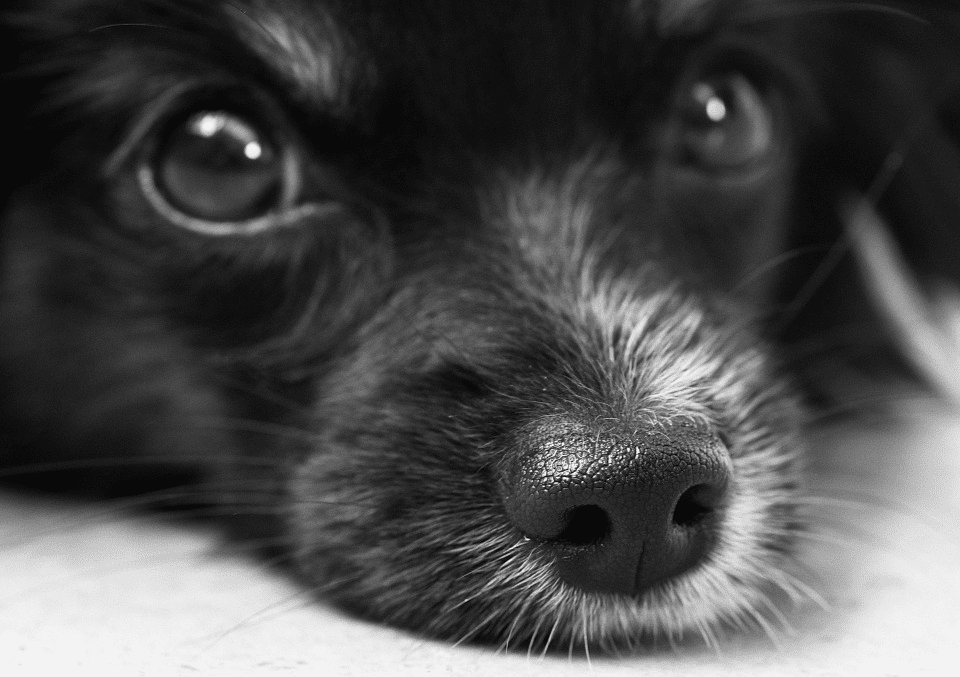
The scientific term for whiskers is vibrissa, and they help dogs feel and explore their surroundings. These special tactile hairs are an evolutive trait that allows mammals to determine the size of nearby objects, detect threats, find their food, and much more. Keep reading to learn what are dogs’ whiskers, why they are important, and why they should never be removed.
Do All Dogs Have Whiskers?
Whiskers are an important part of a dog’s appearance. They serve many purposes, including helping the animal feel safe and secure, keeping its ears warm in cold weather, and providing sensory information about the environment.
Top ten reasons why dogs have whiskers
- There are several reasons why all dogs should have whisker hair.
- First, it helps keep the ears warm when the temperature drops.
- Second, it provides a sense of security.
- Third, it keeps the fur neat and tidy.
- Fourth, it makes the dog more attractive.
- Fifth, it gives the dog a unique appearance.
- Sixth, it helps the dog communicate with other animals.
- Seventh, it helps the dog feel comfortable in different environments.
- Eighth, it helps the dog maintain balance while walking.
- Ninth, it helps the dog stay clean.
- And finally, it helps the dog avoid getting into trouble.
What are Dog Whiskers?
Whiskers or vibrissae are a type of tactile hair found on several mammal species. Whiskers are different from the hair found on other parts of the body by being longer, thicker, and growing from a special follicle.
Vibrissae can be found on various parts of the body, but the most frequently studied are those found on the face. Just like other hairs on the body, whiskers are mainly composed of keratin and grow from a hair follicle. However, unlike other hair follicles, whiskers’ follicles are heavily innervated by sensory nerves. What this means is that the movement of whiskers will send a signal to the sensory nerves on its follicle. This signal will be interpreted by the brain and a response will follow.
Is it okay to touch a dog’s whiskers?
While it is generally safe to touch a dog’s whiskers, it is important to remember that they are highly sensitive. Pulling, tugging, or otherwise manipulating a dog’s whiskers can be uncomfortable or even painful for the dog. In addition, some dogs may be more sensitive to touch than others, so it is always best to approach a dog gently and to let them guide the interaction. If a dog seems uncomfortable or anxious, it is best to give them space and avoid touching their whiskers or other sensitive areas.
What is the Function of Dog Whiskers?
Dogs, as well as other animals such as bears, seals, rats, and cats, use whiskers to perceive their surroundings. Canine whiskers are sensitive to subtle changes in air currents and to even the slightest touch. Dogs can sense the shape, size, and speed of the objects and animals that surround them. Having this tactile organ is essential for animals because they lack a keen vision. With the help of whiskers, dogs can move around and explore their environment in the dark. In addition, being able to feel slight air vibrations helps dogs detect approaching dangers.
Small dogs, as well as rats, cats, and other small mammals, use their whiskers to determine if they can fit into a small space. Dogs may also use these spacial facial hairs to locate their food just like other animals do.
What Happens if Dog Whiskers Are Cut?
Dog whiskers should never be removed by cutting or plucking them. As you can imagine, removing a dog’s whiskers would lead to him losing his ability to sense his environment through this invaluable tool. Dogs who have had their whiskers removed present confusion and decreased spatial awareness. On top of that, the removal of a dog’s whiskers can be uncomfortable, stressful, and painful for dogs.
Whiskers help keep your dog’s eyes clean by protecting them from snow and rain. If your dog has no whiskers, then he will likely suffer from dry eye syndrome. This condition occurs when your dog’s tear glands aren’t producing enough tears. As a result, his eyes become irritated and painful.
Is it okay to groom a dog’s whiskers?
While dogs groom themselves, it is not recommended to trim or groom their whiskers. Trimming a dog’s whiskers can disrupt their ability to navigate its environment and can be disorienting for them. Furthermore, trimming a dog’s whiskers can cause discomfort or pain for the dog, as the nerve endings in their whiskers are highly sensitive.
If a dog’s whiskers become dirty or tangled, it is best to clean them gently with a damp cloth or brush them gently with a soft-bristled brush. This can help remove dirt and debris from their whiskers without causing discomfort. It is important to approach a dog’s whiskers with care and to avoid pulling or tugging on them.
In addition, it is important to keep in mind that dogs use their whiskers to communicate with other dogs. Trimming or grooming a dog’s whiskers can change their appearance and alter the way they communicate with other dogs. Therefore, it is best to leave a dog’s whiskers in their natural state and to allow them to use them for their intended purposes.
Overall, grooming a dog’s whiskers is not necessary and can potentially cause discomfort or disrupt their ability to navigate their environment. It is best to handle a dog’s whiskers with care and to allow them to use them for their natural purposes.
Do all dogs have whiskers?
It’s true that some breeds of dogs do not have whiskers. However, there are plenty of breeds that do have whiskers. In fact, there are even breeds that only have whiskers on one side of their face!
Finally, here are some more reasons why dogs have whiskers that you might find surprising:
-
Sensing movement: Dog whiskers can detect even the slightest movements of air currents. This allows dogs to detect prey, predators, and other objects in their environment.
-
Communicating with other dogs: Dogs use their whiskers to communicate with other dogs. For example, when a dog is feeling aggressive or fearful, it may stiffen its whiskers and hold them forward, which is a sign of aggression. Alternatively, when a dog is relaxed and friendly, their whiskers will be loose and relaxed.
-
Measuring distance: Dog whiskers can help dogs gauge the distance between themselves and an object or another animal. This is especially useful when navigating in low-light conditions or when hunting.
-
Protecting the eyes: Whiskers above a dog’s eyes can help protect their eyes from foreign objects, such as dirt or dust.
References:
Prescott, et al. (2011). Vibrissal behavior and function. Scholarpedia, 6 (10):6642.





